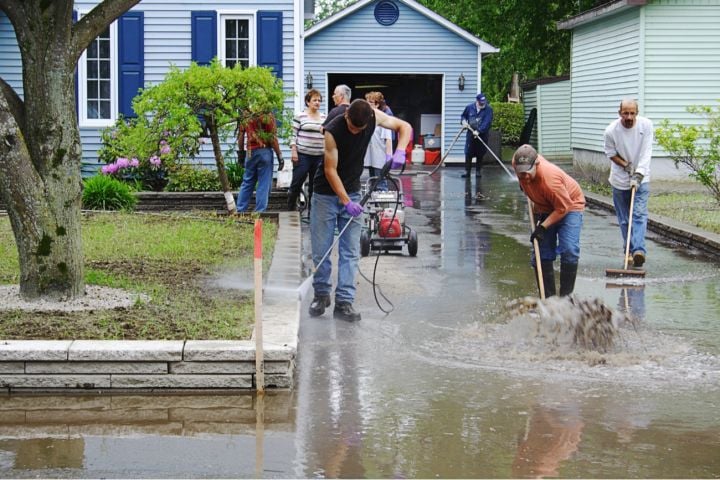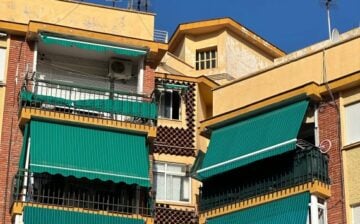
There can be a great deal of distress associated with dealing with flood damage and the property damage it leaves behind. We need to understand damage restoration to navigate and start our restoration process. Therefore, it is important to understand the flood damage restoration process to make a difference in our property.
Water damage and restoration is more than removing and drying the affected areas. The restoration process mainly aims to repair, sanitize, and restore the property back to its original condition. Additionally, the restoration process also helps to prevent our homes from any future water damages. By understanding the process, we get a brief insight into the process and can make informed decisions on choosing the right restoration company to help us.
Therefore, we have compiled a list of the processes below for flood damage restoration.
What Are the Process of Flood Damage Restoration?
The process that goes into flood damage restoration is listed below:
Evaluate the Extent of Flood Damage
When trying to understand the extent of flood damage on the property, we need to check each corner of the house systematically. We can check the rooms first and other structural elements, such as the furniture and personal belongings. If we come across any damage, note it down before we forget. As we venture into each corner of our house, it is important to look for any signs of water damage, such as:
- Discoloration
- Warping
- Swelling
- Damp spots
- Musty odors
These are clear signs of water damage on our property, which we cannot ignore. However, it is important to prioritize safety while assessing any compromised structures or electrical systems around our property after water damage. Hiring a professional company to evaluate the extent of flood damage would be our best option because their trained eyes can spot water damage easier, and they are trained professionals who prioritize safety as well.
Water Extraction and Drying
After assessing the damage, the important part is water extraction and drying out the affected areas. Water extraction is removing unwanted water from your property and preventing it from future damage. Depending on the size of the water damage, we can hire a professional company to extract and dry the water from our property.
The professionals use equipment such as vacuums, pumps, or specialized extraction machines that help to extract the unwanted water from our property and give your place the dry hug it needs. They work methodically section by section so all the damaged area gets thoroughly extracted. After we remove the unwanted water, we must dry out the area. Opening the windows, running fans, and using dehumidifiers to circulate the air indoors will speed up the process and give us better results.
Cleaning and Sanitizing Flood-Affected Areas
Now it’s time to roll up our sleeves and clean and sanitize the areas from which we extracted and dried the unwanted water. Cleaning and sanitizing will help prioritize safety and restore your space’s appearance to its original form.
After cleaning, sanitizing the area is a must. A thorough cleaning of any dirt and debris left behind by a flood is a must, and the affected area with bacteria and germs needs proper sanitization for a safer environment. Cleaning high-touch surfaces like door knobs and switches is also extremely important after flood damage restoration.
Professional companies have the right tools like disinfectants to clean and sanitize the affected areas so you don’t have to compromise your health after the water damage restoration process.
Addressing and Restoring Structural Damages
Our structural integrity is another important aspect of our home, and addressing and restoring the process will help to restore structural integrity. Floods can wreak havoc on our homes and the structural elements. And with restoration at hand, we can address the issues and get them back to their original condition in no time.
To tackle flood damage, getting help from a professional company is our best option to address and restore any damaged aspect of our homes, such as walls, floors, or other structural elements. Additionally, they have the right skills and knowledge to spot weak areas not visible to our eyes, replace damaged areas, and ensure that the restoration process is complete and our home is back to its original condition after flood damage restoration.
Communicate with your restoration company well and stay informed about the restoration processes and prevention measures you can use after completing the restoration process. After the restoration process is complete, remember to ask for tips to prevent your home from any structural damage in the future.
Mold Prevention and Remediation
Molds can easily sneak inside our property and make it their home quickly. Especially after a flood, the excess moisture and water can act as a breeding ground for molds to flourish, causing further damage and a risk to our health. That’s why mold prevention and remediation is an important step in the flood damage restoration process.
Professional companies start mold prevention with the help of dehumidifiers to dry out the area and make it moisture free. They ensure that ventilation, such as exhaust fans, works properly to regulate the moisture level inside the building. If they spot mold growth, they will safely extract the mold, clean the area, and remove any affected materials if necessary.
Frequent inspections are also extremely important to check the moisture level after mold prevention and remediation.
Conclusion
You have now journeyed through the essential steps of flood damage restoration. Even though the water restoration process can be challenging, it is easier now that you know how to navigate it and the important aspects you must consider.
Mitigating the flood damages on our own can be near impossible as we need the expertise and tools. But getting help from a professional company for flood damage restoration is the best way to tackle the issue. With their knowledge and access to the right equipment, we can preserve the structural integrity of our home.
We hope you found this blog post on Understanding the Process of Flood Damage Restoration useful. Be sure to check out our post on Working With a Full-service Disaster Restoration Company for more great tips!
Have Experience in the Moving Industry? Want an Additional Income Stream? Work With All Around Moving!
Partner with us, All Around Moving Services Company, Inc., and we’ll help you make money. Click here to learn more.





